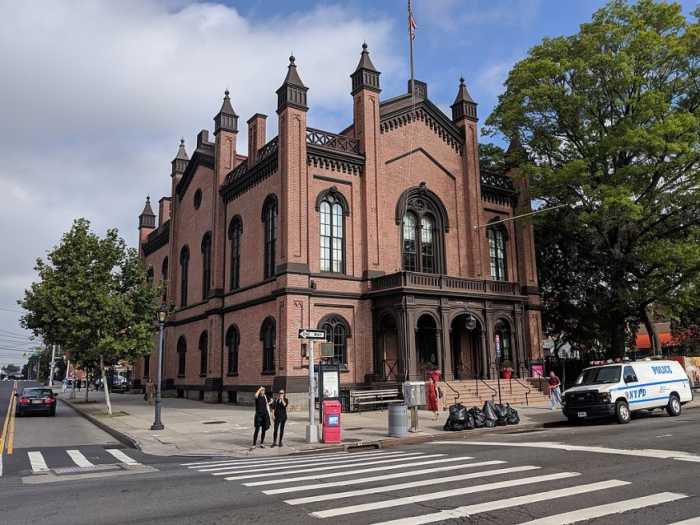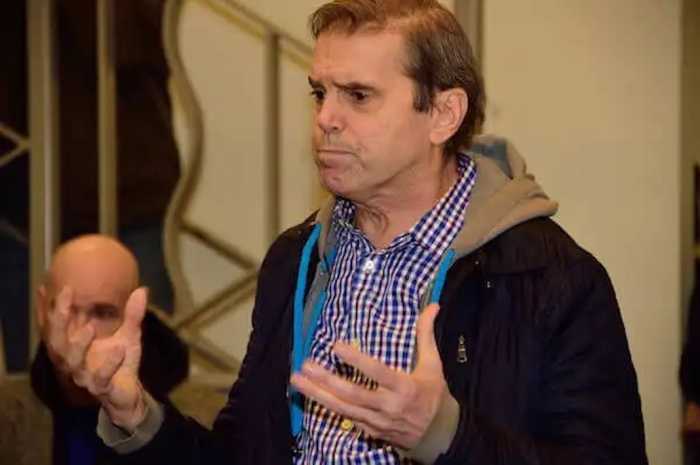For the past year and a half, Nili Ness has been working as Queens Library’s first and only correctional services librarian, a role which has allowed her to serve Rikers Island inmates.
Three times a week, Ness visits Rikers ready to hand deliver carts full of books and other reading materials to the eagerly waiting individuals at the Queens prison complex.
Ness became inspired to work as a librarian after substituting for one at Hunter College High School for a semester. Following that experience, she applied to Queens College’s Graduate School of Library and Information Studies and explored the topic of services to incarcerated youth. From there she said she became drawn to learning about underserved populations and served as a part-time correctional services assistant, which eventually led her to her current role.
When she first started in the role, she said there was a “big learning curve” since she had to hand write everything instead of using technology to do things like keep track of the books and take requests from inmates.
Her role as correctional services librarian was created thanks to a grant from the New York City Council, which allowed the Queens Library to extend their services to Rikers Island. In 2016, the NYC Council issued a $600,000 grant to the three New York City library systems to expand the Video Visitation program.
The librarian said that the program was created by former NYC Council Speaker Melissa Mark-Viverito and Councilman Jimmy Van Bramer and operates in 22 libraries across the five boroughs.
Ness said that the video visitations do not replace the traditional in-person visits, but rather act as a supplement. She added that travel to Rikers is sometimes difficult and can often take family members an entire day to get there.
Other money from the NYC Council grant went to funding the Rolling Library that Ness operates. For those who may not have families to visit them or communicate with, Ness said that the books are their escape.
Ness serves inmates in the Anna M. Kross Center (AMKC) and Otis Bantum Correctional Center (OBCC) within the complex. She serves 16 general population houses at Otis Bantum, which hold about 40 to 50 inmates per house. At Anna M. Kross, Ness visits 16 male-only houses with about 31 men per house, as well as a newer unit for veterans that house about 20 individuals.
She added that there may be plans in the works to open a standing library at the Otis Bantum Correctional Center, which both the Queens Library and Brooklyn Public Library would share.
“Authors like Patterson are definitely popular, but urban fiction, like K’wan, is also in demand,” she said. “Some people like physics books, so you can put Stephen Hawkins and Richard Feynman and people will pick it up and want to read it. I also try to bring specific books if there are any requests. For example, I had one man who was hard of hearing and he really wanted books on sign language and I was able to bring him some.”
But Ness said that there are still large portions of Rikers that do not receive any books or educational materials due to a lack of staffing and logistical challenges, including lack of elevators to transport her book cart to different floors.
“It’s hard to see that people still don’t get access,” Ness said. “When you work at Rikers Island, you realize how large the need is. Even with all three public library systems involved, there are still large areas of the jail complex that don’t receive any type of library service, outside of perhaps, access to the law library. There are still plenty of people who have no meaningful access to materials to enrich their inner lives.”
In addition to the Rolling Library and Video Visitation programs, Ness also conducts outreach toward inmates’ reentry into society, which involves putting together a “Queens reentry guide” filled with library-offered resources and lists of other Queens-based organizations that offer free or low-cost services.
“I want people to know that it’s not out of sight out of mind,” said Ness about the people she serves at Rikers. “I believe in the power of reading and what it can do in someone’s life.”



































